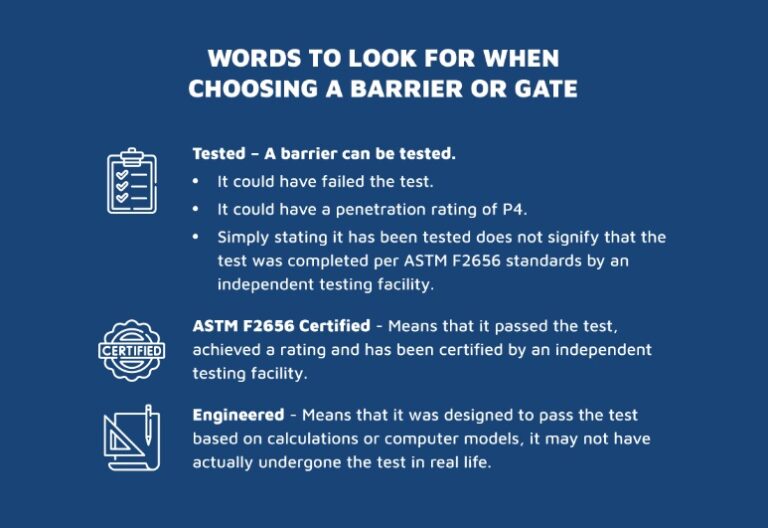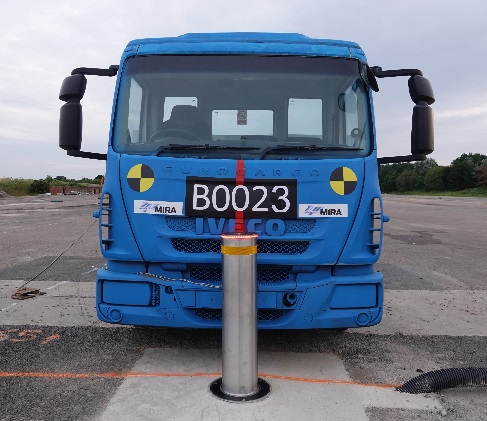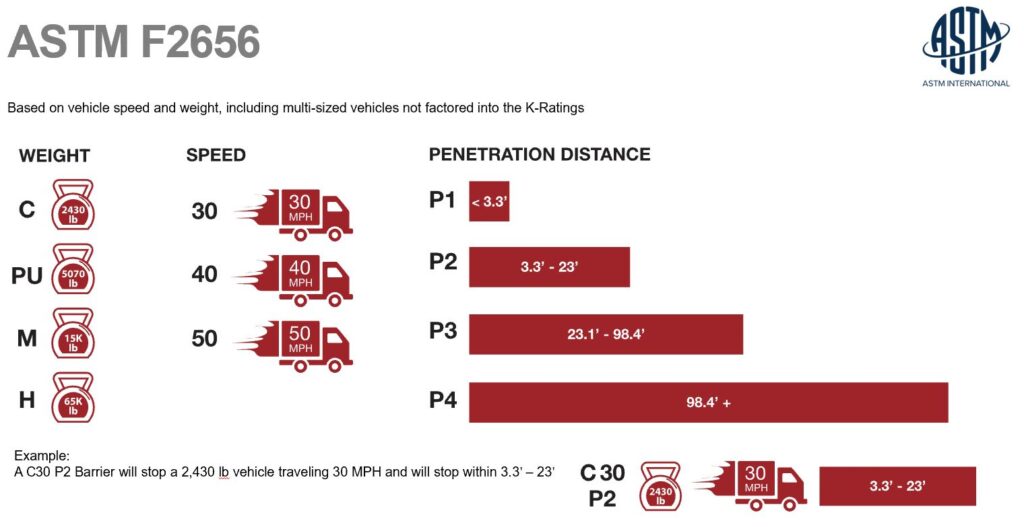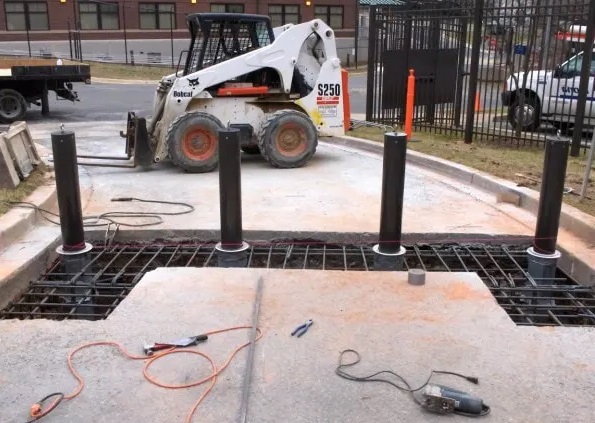Crash Ratings for Bollards
Q: What are the crash ratings for bollards?
A:When we talk about how strong a bollard or barrier is—like the ones from Barrier Stop—we use something called a crash rating. These ratings tell us how well a barrier can stop a vehicle from crashing through.
Today, engineers use a standard called ASTM F2656 to test how strong bollards and barriers are. This has replaced the older system once used by the Department of Defense (DoD). All official crash tests now follow this new standard.
3 Things That Decide a Crash Rating (with Barrier Stop)
There are three main things that help decide how strong a Barrier Stop bollard is during a crash test:
- Vehicle Weight
How heavy is the vehicle that hits the barrier? Bigger and heavier vehicles are harder to stop. - Vehicle Speed
How fast is the vehicle going when it hits? Faster vehicles hit with more force. - Penetration Distance
After hitting the barrier, how far does the vehicle get past it? If it doesn’t move past much at all, that means the barrier worked really well
products are designed with these safety standards in mind to help protect people and places from vehicle crashes.
ratings tell us how well a barrier can stop a vehicle from crashing through.
Today, engineers use a standard called ASTM F2656 to test how strong bollards and barriers are. This has replaced the older system once used by the Department of Defense (DoD). All official crash tests now follow this new standard.


Understanding Crash RatiStopngs with Barrier
Understanding Crash Rating with Barrier Stop
When testing how strong a barrier is—like the ones made by Barrier Stop —experts use special ratings from a system called ASTM. These ratings help show how well a barrier can stop a vehicle from crashing through
What Do These Ratings Mean?
ASTM crash ratings look at two main things:
The weight of the vehicle
How fast the vehicle is going when it hits the barrier
But there’s something else that’s really important too—it’s called the P-rating, or penetration rating. This tells us how far a vehicle goes past the barrier after crashing into it. The less distance it goes, the better the barrier works!
The 3 Penetration Ratings:
Barrier Stop uses these official ratings to show how strong and safe their barriers are:
P-1 (The Best!)
The vehicle stops within 3.3 feet (1 meter) of the barrier. This is the strongest and safest level.P-2 (Still Strong)
The vehicle stops between 3.3 feet and 23 feet (1–7 meters) past the barrier.P-3 (Basic Protection)
The vehicle goes 23.1 feet to 98.4 feet (7.1–30 meters) past the barrier. Not as strong as P-1 or P-2.
So when you see a Barrier Stop product with a P-1 rating, you know it’s one of the best at keeping vehicles from getting through!

The 3 Penetration Ratings:
The Department of Defense (DOD) crash ratings, also known as K-ratings, have been around since 1985 but have been replaced with the updated M ratings that provide more in depth data data.
M-RATINGS: NEW METHOD
The newer M Rating system takes into account a wider range of vehicle weights, speeds and penetration distances than the previous K Rating.
Using standards from the American Society for Testing and Materials (ASTM), ASTM crash ratings are different because they’re based on how far a vehicle’s payload travels beyond a barrier, rather than its front. Like K-ratings, M-ratings are based on vehicle size, speed and travel distance.
M-ratings are also divided into P1, P2, P3 and P4 classifications, based on how far the vehicle traveled beyond the barrier:
- P1 rating: A vehicle traveled 3.3 feet or less beyond the barrier.
- P2 rating: A vehicle traveled between 3.31 and 23 feet.
- P3 rating: A vehicle traveled between 23.1 and 98.4 feet.
- P4 rating: A vehicle traveled farther than 98.4 feet.

Examples of ASTM’s crash barrier ratings:
| Vehicle Type | Weight – up to. | Penetration rating at specific speed. The number refers to vehicle speed in MPH. |
|---|---|---|
| Small Car (SC) | 2,430 lbs. / 1102 Kg | SC30 (50 kph) SC40 (65 kph) SC50 (80 kph) SC60 (95 kph) |
| Full Size Sedan (FS) | 4,630 lbs. / 2100 Kg | FS30 FS40 FS50 FS60 |
| Pickup Truck (PU) | 5,070 lbs. / 2300 Kg | PU30 PU40 PU50 PU60 |
| Medium Goods Vehicle (M) | 15,000 lbs. / 6800 Kg | M30 M40 M50 |
| Heavy Goods Vehicle (H) | 65,000 lbs. / 26500 Kg | H30 H40 H50 |
ASTM penetration levels:
| Code | Description |
|---|---|
| P1 | Penetration up to 3.3 feet (1 m.) |
| P2 | Penetration up to 23 feet (7 m.) |
| P3 | Penetration up to 98 feet (30 m.) |
| P4 | Penetration greater than 98 feet (30 m.) |
